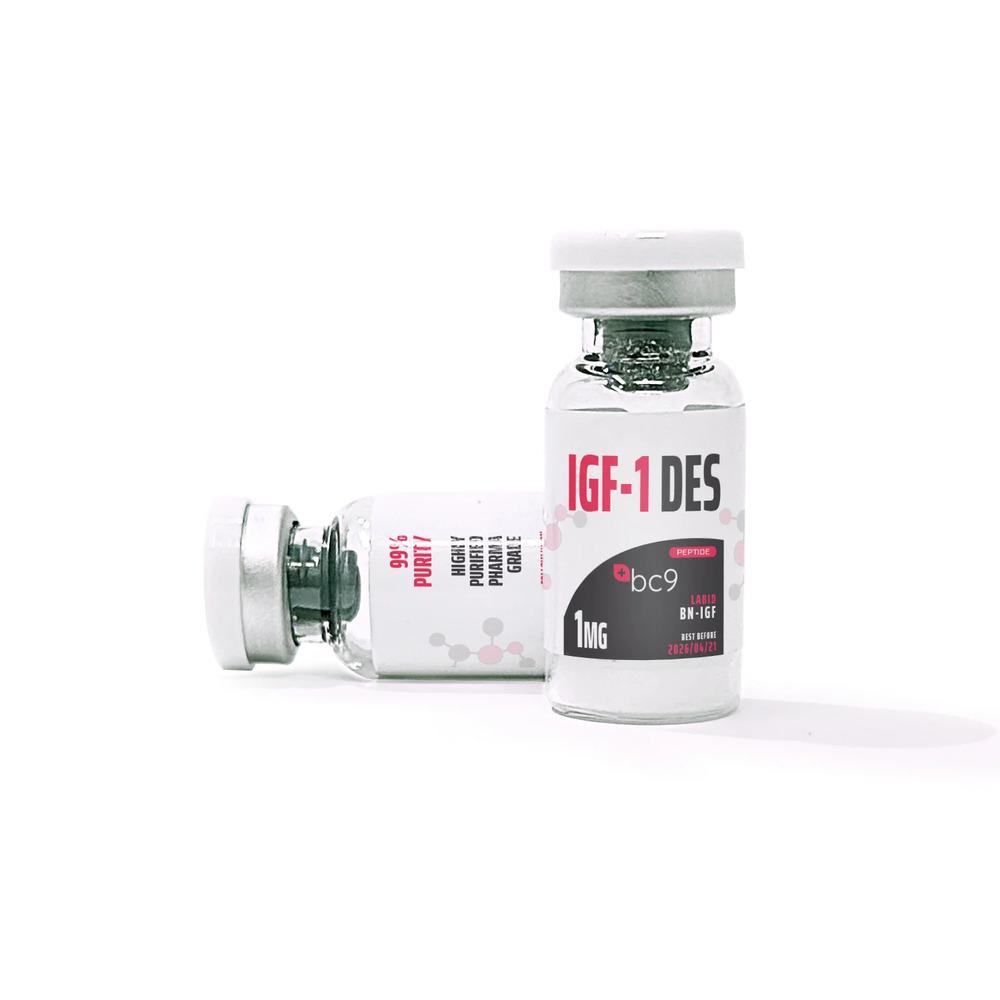Understanding IGF-1 DES
IGF-1 DES (Insulin-like Growth Factor-1 DES(1-3)) is a truncated variant of IGF-1, missing the first three amino acids at the N-terminus. This molecular modification enhances its biological activity, resulting in significantly stronger anabolic effects than standard IGF-1. Its shorter half-life, approximately 20–30 minutes, makes it highly localized in action, particularly at injection sites or targeted tissues. Researchers have been investigating IGF-1 DES for its potential in muscle growth, tissue regeneration, and neuroprotection.
Mechanism of Action of IGF-1 DES
IGF-1 DES operates through the IGF-1 receptor (IGF-1R), activating downstream signaling cascades such as the PI3K/Akt and MAPK pathways. These pathways regulate protein synthesis, muscle hypertrophy, and cellular repair. Unlike IGF-1 LR3, which remains active in systemic circulation, IGF-1 DES exerts localized and immediate effects, making it especially useful in experimental models where precise targeting is required.
Current Research on IGF-1 DES
Muscle Growth and Regeneration
Several animal studies have demonstrated IGF-1 DES’s potent anabolic effects. Its ability to stimulate myoblast proliferation and differentiation suggests a role in accelerating muscle recovery post-injury. Research also indicates its potential for increasing muscle fiber size and satellite cell activation, critical components in hypertrophy and tissue repair.
Neuroprotective Effects
Preclinical findings show that IGF-1 DES may support neuronal survival by enhancing synaptic plasticity and reducing apoptosis. This has raised interest in its potential applications for neurodegenerative conditions such as Alzheimer’s disease, Parkinson’s disease, and traumatic brain injury.
Wound Healing and Tissue Repair
IGF-1 DES has been studied for its capacity to promote collagen synthesis and angiogenesis. These effects are crucial in wound healing, skin regeneration, and recovery from surgical procedures. Experimental trials suggest improved outcomes in both soft tissue and bone healing.
Oncology Considerations
While IGF-1 signaling is associated with cell proliferation, studies on IGF-1 DES remain cautious regarding oncogenic risks. Research is ongoing to determine its safety profile in relation to tumor growth, as the potent growth-promoting properties of IGF-1 analogs must be carefully monitored.
Potential Applications of IGF-1 DES
- Sports and Performance Research: Investigations suggest IGF-1 DES could be effective for localized muscle growth, making it a subject of interest in performance enhancement studies.
- Regenerative Medicine: Its regenerative potential in muscle, nerve, and connective tissues highlights its promise for medical advancements in rehabilitation.
- Anti-Aging Studies: With its role in cell repair and rejuvenation, IGF-1 DES has been explored as part of longevity and anti-aging research.
Safety, Limitations, and Future Directions
Although IGF-1 DES demonstrates significant potential, more clinical trials are required to validate its long-term safety. Current challenges include:
- Short half-life requiring localized administration.
- Limited human clinical trials compared to preclinical data.
- Potential risks of uncontrolled cell proliferation.
Future research aims to optimize delivery methods, improve stability, and explore therapeutic dosing strategies that balance efficacy with safety.
Conclusion
IGF-1 DES represents a powerful advancement in growth factor research, offering unique benefits over other IGF-1 variants. Its localized, potent activity makes it a promising candidate for studies in muscle growth, regeneration, and neuroprotection. However, thorough investigation into safety and controlled applications is crucial for its progression from experimental studies to potential therapeutic use.

